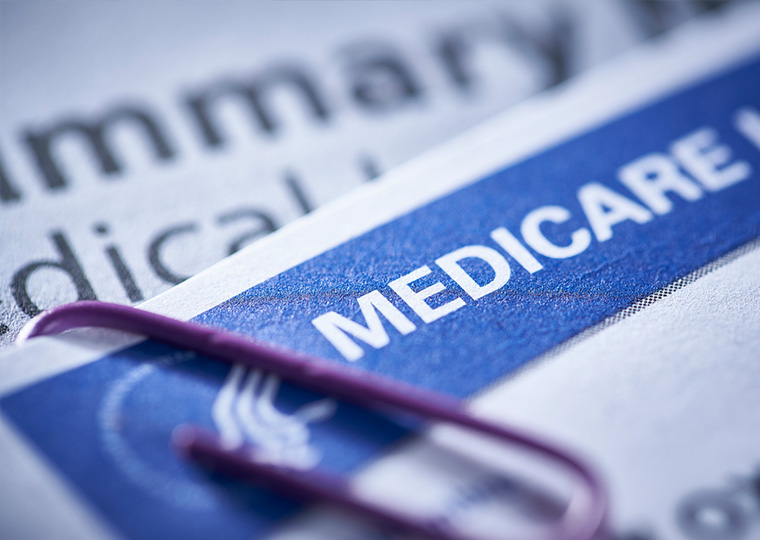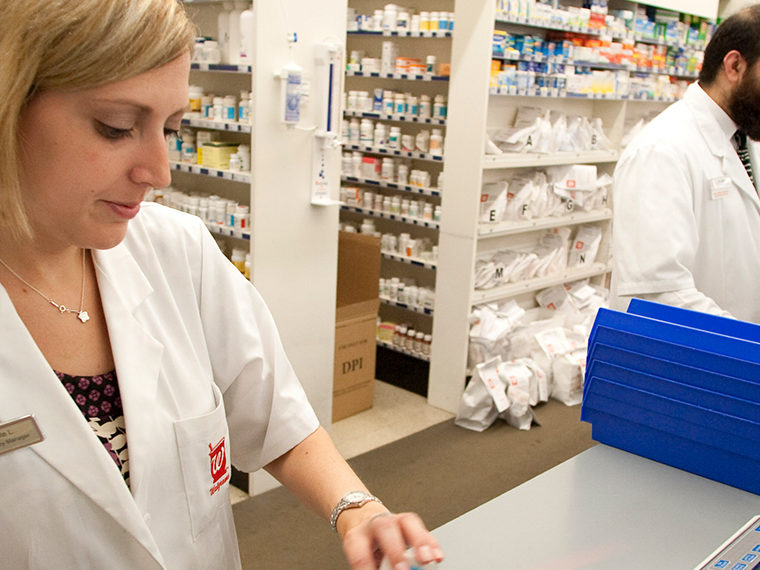Uninsured and insured both receive help; benefits are temporary
Even those with health insurance can have trouble paying big medical bills.
Medical debt is the leading contributor to personal bankruptcy in the U.S., and naturally the more than 31 million uninsured Americans are at greatest risk. But many with coverage are actually “underinsured,” plagued by high deductibles, copays and other out-of-pocket costs they can’t afford.
Hospital financial-assistance programs are designed to ease this burden for both the insured and uninsured by forgiving past bills and reducing patients’ future cost sharing.
Opt In to the Review Monthly Email Update.
The programs have another benefit, a working paper suggests: They help patients to get treatment they otherwise couldn’t afford for serious, chronic health problems.
Financial Assistance Means More Access to Care
The study, forthcoming in the American Economic Review — authored by Stanford’s Alyce S. Adams and Neale Mahoney, Harvard’s Raymond Kluender, New York University’s Jinglin Wang, the National Bureau of Economic Research’s Francis Wong and UCLA Anderson’s Wesley Yin — analyzed the hospital medical records of more than 18,000 participants in the financial-assistance program of the Kaiser Permanente health-maintenance organization in Northern California.
The authors found that patients who were eligible for the program received more diagnostic tests than similar patients who didn’t receive assistance, and these tests revealed instances of heart disease, diabetes and other serious conditions that, if caught early, can be controlled. The analysis also showed increased use of prescription drugs for the treatment of high cholesterol, diabetes and depression.
“The increased detection of abnormal health conditions — a precondition for appropriate treatment — along with the increased drug utilization for treatment-sensitive conditions suggest that financial assistance increases the use of high-value care for at least some patients,” the authors write.
Kaiser’s program also showed a large, positive, but short-term effect on the use of other health care services: Participants were 20% more likely to seek outpatient care, 58% more likely to visit a hospital or clinic and nearly 53% more likely to go the emergency room in the three months after receiving assistance.
A study published in 2021 in the Journal of the American Medical Association estimated that Americans’ total medical debt amounted to $140 billion. (Kluender, Mahoney, Wong and Yin were co-authors of the study.)
Hospital financial-assistance programs help fill the gaps left by the health insurance system, offering debt relief and reduced out-of-pocket costs for those who qualify, helping to ensure that participants continue to get the health care they need.
The programs are also necessary to hospitals’ tax-exempt status. To retain that status, hospitals have to provide free or reduced-cost care to patients who can’t pay for it. In 2018, hospitals provided $26 billion in charity care, including $6 billion for patients with insurance. That amounts to 1.5% of total expenses for the median nonprofit hospital.
For the study, the authors analyzed electronic medical records for more than 18,000 patients who applied for financial assistance with Kaiser Permanente’s Northern California division. Overall, Kaiser operates in eight states and serves more than 12 million patients with 39 hospitals and more than 700 medical offices. To qualify for assistance, patients’ family income must be at or below 350% of the federal poverty level (about $64,000 for a two-person family).
Because Kaiser operates an integrated health system, patients receive all their care at its facilities. As a result, the authors could examine more than 96% of applicants’ health care expenses, including outpatient and ER visits, inpatient hospital stays, drug prescriptions, and lab tests and results. Most of the applicants — about 88% — had either private health insurance or coverage under a Medicare Advantage Plan.
Because of the income cutoff, the authors were able compare applicants who were eligible for assistance with those with similar demographics and health conditions but who don’t meet the eligibility requirement.
Limits in U.S. Health Care Funding Can Mean Poorer Outcomes
The analysis finds that financial assistance increases utilization of health services in the first quarter after a patient is approved. An approved applicant is:
- 3.6 percentage points more likely to have an inpatient stay than a patient who doesn’t receive assistance;
- 13.4 percentage points more like to have outpatient treatment; and
- 6.7 percentage points more likely to visit the ER.
Recipients also were more likely to receive lab tests. Thanks to the increased amount of testing, there’s a greater likelihood of identifying an abnormal health condition. Participations are twice as likely to have a test that identifies high cholesterol and therefore increases the use of cholesterol-lowering drugs. Financial assistance increases utilization for drugs to treat depression by about one-third.
The effects are similar to those found in a previous study of Medicaid patients in Oregon but with a key difference: The Medicaid benefits persisted for a year and half after acceptance into the program, while the effects of the Kaiser program — which reduces patient cost sharing for only six to 12 months — fell off in the second quarter after acceptance and had largely disappeared by the third quarter.
While underscoring the benefits of hospital financial-assistance programs, the study highlights some of the limits of the U.S. system of paying for medical care, Yin says in an email exchange. The programs are small, and compared with government-sponsored Medicaid, the benefits are limited.
“These programs aren’t a substitute for formal insurance, despite their benefits,” Yin says. “We have to ask if it makes sense for hospitals to play the role of insurer of last resort, let alone depend on them to do so.”
Featured Faculty
-
Wesley Yin
Associate Professor of Public Policy and Management
About the Research
Adams, A. S., Kluender, R., Mahoney, N., Wang, J., Wong, F., Yin, W. (2021). The Impact of Financial Assistance Programs on Health Care Utilization. National Bureau of Economic Research. doi: 10.3386/w29227






